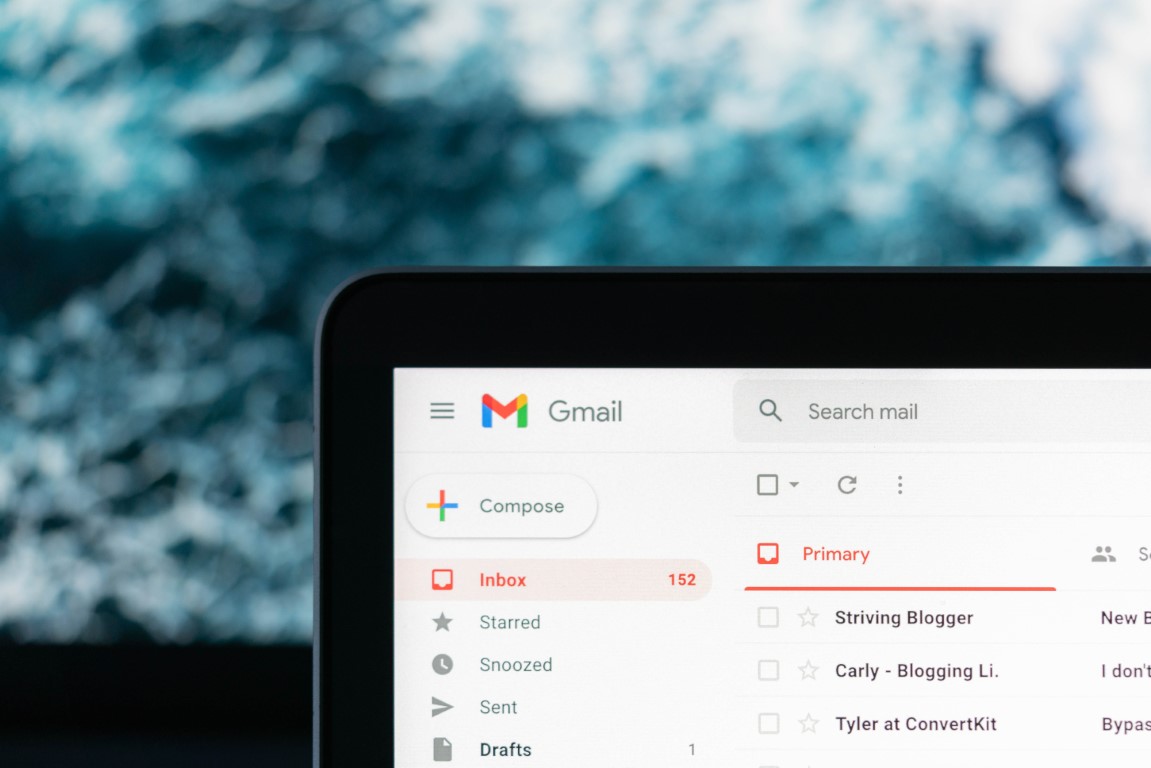Table of Contents
If you’re like most modern-day professionals with an email account (and without an email management strategy), you think about your inbox, in some form or another, for a good portion of your life. At this very moment, it’s probably safe to say you’re either stressed about how much time you spent clearing email this morning or how many emails you didn’t clear.
Without thinking, you can probably recall at least one email you’ve opened every day for the last week but haven’t responded to, one you’ve finally moved into a folder only because you can’t bring yourself to delete it, or one you opened two weeks ago, lost in the shuffle, and are just now remembering.
Email has become the working person’s bogey man—eating up our time and energy because we can’t stop thinking about it. But imagine if we could. For the working world, an empty email inbox has become just about as fictional as the bogeyman himself, so it’s no wonder the idea of Inbox Zero has been the object of organizational obsession.

What Is Inbox Zero?
If you’re not familiar, “Inbox Zero” was popularized by the founder of the 43 Folders productivity blog, Merlin Mann, who shared the clearing email strategy that enabled him to get his inbox to zero in 20 minutes.
Written in the early 2000s, Mann was one of the first to acknowledge the distraction and mental clutter caused by an overfull email inbox and to offer solutions for “decluttering your inbox to declutter your mind.” He shared things like how to respond to emails more efficiently and how to permit a guilty brain to delete the emails you only tell yourself you’re going to read.
Inbox Zero is not, as it has been made out to be and then criticized for, a complete email management solution; it’s a partial strategy for clearing email effectively to make your inbox less of a burden.
While mental clarity is one major benefit of a well-managed email, it’s not everything. For a professional or business email, effective management is not about minimizing the role of your email but optimizing it as a tool for business.

Why Inbox Zero Is Only Part of Your Email Management System
The zero inbox strategy offers helpful mentalities for clearing the clutter to regain control over your inbox. However, this is just one piece of the puzzle when it comes to building a comprehensive email management system.
Business email management extends far beyond just clearing email. It’s about transforming your email into a strategic tool that enables you to efficiently transform emails into actionable projects that generate revenue.
This means utilizing email functionalities to systematize and automate your inbox for rapid delegation and prioritized task management. It means creating a system of email organization that supports your workflow.
Your email management system should get rid of what’s unimportant, delegate what others could do, and help you focus on what’s most important for your business. Clearing email is a natural part of the process, but it’s important that it doesn’t become the end goal. To that end, let’s talk about some other strategies to keep in mind as you create or improve on your email management system.

6 Mentalities for an Effective Email Management System
Whether or not the Inbox Zero mentality works for you, there are some key strategies that will help you expand from just clearing email to maintaining an effective and efficient email management system.
1. Clearing email should only be manual once.
Inbox Zero fanatic or not, clearing email feels good; but as satisfying as it is, it should not be a big project more than once. As you go through the process of clearing email for the first time, don’t just clear your inbox, but use it as a tool for automation.
Identify which senders you’re regularly deleting and which you’re regularly sending to a certain folder, and set filters to enable your email to automatically organize emails based on sender. This way, rather than continuing to manually sort through emails one by one, your email software will take over the process of categorizing incoming emails, allowing you to focus on higher-priority tasks.
Automations allow you to automatically route emails from specific senders or with certain keywords to designated folders, ensuring that important messages are always accessible without cluttering your main inbox. Email automation tools can help you quickly clear your inbox by flagging, labeling, or archiving messages based on predefined criteria. These tools not only save time but also reduce the mental burden of constantly deciding what to do with each email.
2. It’s wise to take care of the hardest emails first.
Once you’ve streamlined your email process through automation and email folder organization, you’ll be left with emails that require action but don’t necessarily need your attention. Don’t waste time answering emails that someone else could handle.
If you’re in the habit of responding quickly to every email that lands in your inbox, you might inadvertently be robbing yourself of precious time. Instead, focus on the most difficult and demanding tasks first—the emails that only you can respond to.
Once you’ve done that, your inbox as a whole can be handed off to someone else, like an email management virtual assistant who can categorize incoming emails, draft responses, schedule appointments, and delegate corresponding tasks at a fraction of the cost of your own valuable time.
By adhering to the principle of tackling the hardest emails first, you avoid getting bogged down in easy, time-consuming tasks that can be efficiently delegated.
3. You shouldn’t treat your inbox like a task list.
Similarly to the above strategy, it’s important that you treat your email inbox as a tool for delegation and organization, rather than a task list that has you constantly responding to incoming emails like checking items off a never-ending to-do list.
Instead, consider your inbox the beginning of the delegation process. Briefly acknowledge incoming emails and put them in their respective folders where you can address them at the appropriate time.
It’s true—before you get organized, moving emails into a folder usually is a guilt-free way to ignore emails. But once you’re organized, it’s the best way to make sure they don’t get ignored, as they will be organized based on their importance and urgency.
This is all about delegation: When you receive an email that requires action but not necessarily your direct involvement, delegate it to the appropriate person or team. Gmail and Outlook both offer delegation features that support this process; and email organization software has come a long way in optimizing workflows too. By entrusting tasks to others, you free up your own time and ensure that responsibilities are distributed efficiently.
By using the process of clearing email to also delegate projects, you save yourself the time of an extra delegation step, plus you ensure that tasks are handled by the most suitable individuals or teams.
4. Clearing email isn’t the goal.
This should be a natural result of setting automations and delegating “easy” emails, but it bears repeating, especially if you’re someone who’s prone to distraction and mindless tasking or scrolling:
Clearing email for the sake of clearing email is futile, and focusing on a constantly clear inbox can lead to a perfectionist, clearing-obsessed mindset. You may find yourself constantly checking your email, archiving messages, and ultimately losing time to address the emails that genuinely matter or require action.
This is one reason some people opt out of the Inbox Zero mindset—even when it’s not the intention, a healthy organizational mindset can quickly devolve into meaningless and time-consuming tasking that distracts from your actual work.
To avoid this counterproductive mindset, it’s good practice to frequently remind yourself: email is a tool for initiating and managing tasks, not as a task in itself. Another strategy for maintaining a healthy relationship to clearing email is to set specific email check-in times, rather than doing it continuously throughout the day.
5. Checking email intermittently will help you keep focus.
Regularly checking your inbox at established intervals allows you to maintain control without succumbing to the distraction of constant email monitoring. This approach helps you allocate dedicated time for managing inbox efficiently, ensuring that you don’t miss important messages but also that your workflow isn’t constantly interrupted.
Plus, by dedicating intentional time for clearing email, you’re likely to not only work more efficiently, but to write more responsive and attentive emails that promote a better client experience.
By checking your inbox at specific times when you know you can dedicate your full attention, you’ll be better equipped to not just answer but respond to challenges and delegate emails while they’re fresh in your mind.
6. Clearing emails should always be purposeful.
Before you investigate how to delete your emails all at once, first make sure you understand the difference between archiving and deleting emails. Every action, whether it’s moving an email or setting up an automation, should be deliberate, even when it involves eliminating emails.
Deleting bulk emails is an effective way to target spam emails that you know you won’t ever need. But otherwise for clearing email, I recommend archiving.
By archiving emails, you retain them in an organized, accessible place that doesn’t clutter your inbox and that only uses a fraction of the storage space. This allows you to maintain a searchable archive of past communications and to retrieve specific information or attachments you might have lost.
For example, old client information isn’t actively relevant for day-to-day workflows, but it could be necessary for resolving a compliance issue that arises down the road. Archives allow you to search by sender or by keywords for an efficient retrieval of old information.




